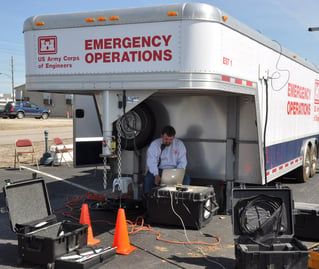Preparing wastewater systems for both natural and human-caused disasters can preserve resources, protect communities and save lives. A key part of this preparation is training your utility employees to respond to emergencies. Both during and after a crisis, wastewater utilities and their workers have a responsibility to take action.
In 2003 President George W. Bush enacted Homeland Security Presidential Directive/HSPD-5 and tasked the Department of Homeland Security with developing and administering a comprehensive National Incident Management System (NIMS). The goal of NIMS was to enhance the U.S.’s ability to respond to national incidents—from terrorist attacks to tornadoes—by establishing a single approach to managing domestic incidents at all jurisdictional levels regardless of cause, size or complexity.

At its foundation, NIMS promotes mutual aid by allowing state, territorial, local and community-based organizations, including public, non-governmental and private organizations (such as utilities), to work together in first response. To further regulate cohesive national action, NIMS also incorporated the existing Incident Command System (ICS) structure, which outlines a standardized approach to the command, control and coordination of emergency response.
As a companion directive to HSPD-5, Presidential Policy Directive/PPD-8, also known as “The National Preparedness” goal, was created to strengthen the systematic preparations for threats ranging from acts of terrorism to natural disasters. Under PPD-8, all public works personnel, including wastewater operators, are named as first responders during emergency situations along with firefighters, police officers and other public safety officials. During an incident such as an earthquake, a utility plays two main roles in the response:
- It manages the direct effects of the incident on utility operations by directing utility response and recovery actions.
- It supports the overall local community Emergency Operations Center (EOC) by coordinating the utility response with the overall local community EOC action plan objectives and priorities.
As a utility provider, you should prioritize not only a comprehensive system ERP, but also employee training in basic ICS and NIMS. FEMA recommends that everyone involved in emergency management should take the baseline curriculum courses IS-700 NIMS, An Introduction and ICS-100 Introduction to the Incident Command System. The protocols covered in these training courses provide a richer understanding of roles and responsibilities during preparedness, response and recovery activities.
To learn more about having your team NIMS and ICS trained, click here.
To learn more about what your system can do to plan for a crisis, read our Emergency Response and Disaster Planning for Wastewater Operators white paper.

